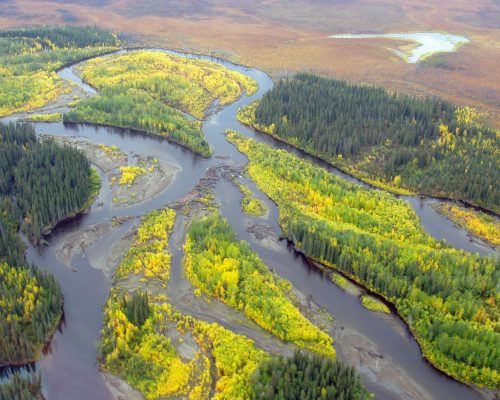Yukon Flats changes are impacting rural residents
July 15, 2021
Heather McFarland
9074746286

As annual temperatures across Alaska rise, people living in the Yukon Flats are seeing major changes. Exceptionally warm winters and longer summers have brought new species to the area, permafrost is changing the land and the plants that grow there, and wildfires are burning more regularly. People living in Fort Yukon, Stevens Village, Venetie, Chalkyitsik, Circle, Beaver and Birch Creek are impacted. For example, debris from river bank erosion has damaged fish wheels, and changing migratory bird patterns impact people’s ability to participate in traditional subsistence activities.
Understanding these changes and their connections is crucial to helping rural communities prepare and adapt for the future. Research conducted by the University of Alaska and Yukon Flats National Wildlife Refuge is exploring how climate change affects the land, wildlife and people on the Yukon Flats.
Recently, the UAF International Arctic Research Center and the Yukon Flats NWR, with input from Council of Athabascan Tribal Governments, released a report that highlights the impact of climate change on wildlife, fish and the environment of the Yukon Flats. Five key facts from the report can help people understand how the Yukon Flats are changing.
Temperatures are warming
Temperatures on the Yukon Flats have been rising since the 1970s. Every season has warmed, but the biggest increase is in winter, which is now 8.8 degrees warmer on average than it was in the 1950s. This new warmth has numerous and cascading impacts.
Thawing permafrost drains lakes
Warmer temperatures are accelerating permafrost thaw, which contributes to greenhouse gas emissions globally and impacts the local landscape. Since permafrost plays a central role to nearly all aspects of the Yukon Flats environment, its decline impacts the plants that grow, the amount of water in wetlands, and the productivity of fish and wildlife habitat. For example, permafrost thaw is draining numerous lakes and streams on the Yukon Flats. When streams are no longer connected to rivers, it can cut fish off from important feeding areas.
Wildfire is increasing
Wildfire activity is increasing on the Yukon Flats as it is across much of Alaska. More acres burn each year, the frequency of fires is increasing, and more fires smolder underground, surviving winter and reigniting the next spring. Since 1988, the frequency of years that burned over 250,000 acres on the Yukon Flats quadrupled.
Breakup happens earlier
The timing of river breakup and freezeup is shifting and becoming less predictable for residents relying on ice for travel. The Yukon River breaks up at Fort Yukon about a week earlier than it did in the early 1900s. Freezeup is also later with a longer slush season and thinner, more dangerous ice with open water that often lasts till midwinter.
Impacts to wildlife are mixed
Climate change impacts to wildlife are extremely variable and difficult to succinctly summarize, but one change local residents and biologists have noted is that fewer and smaller Chinook are coming up the Yukon River. Other species, like Dall s’s sheep may benefit from more vegetation growth brought on by warming temperatures.
Learn more about other changes on the Yukon Flats.


